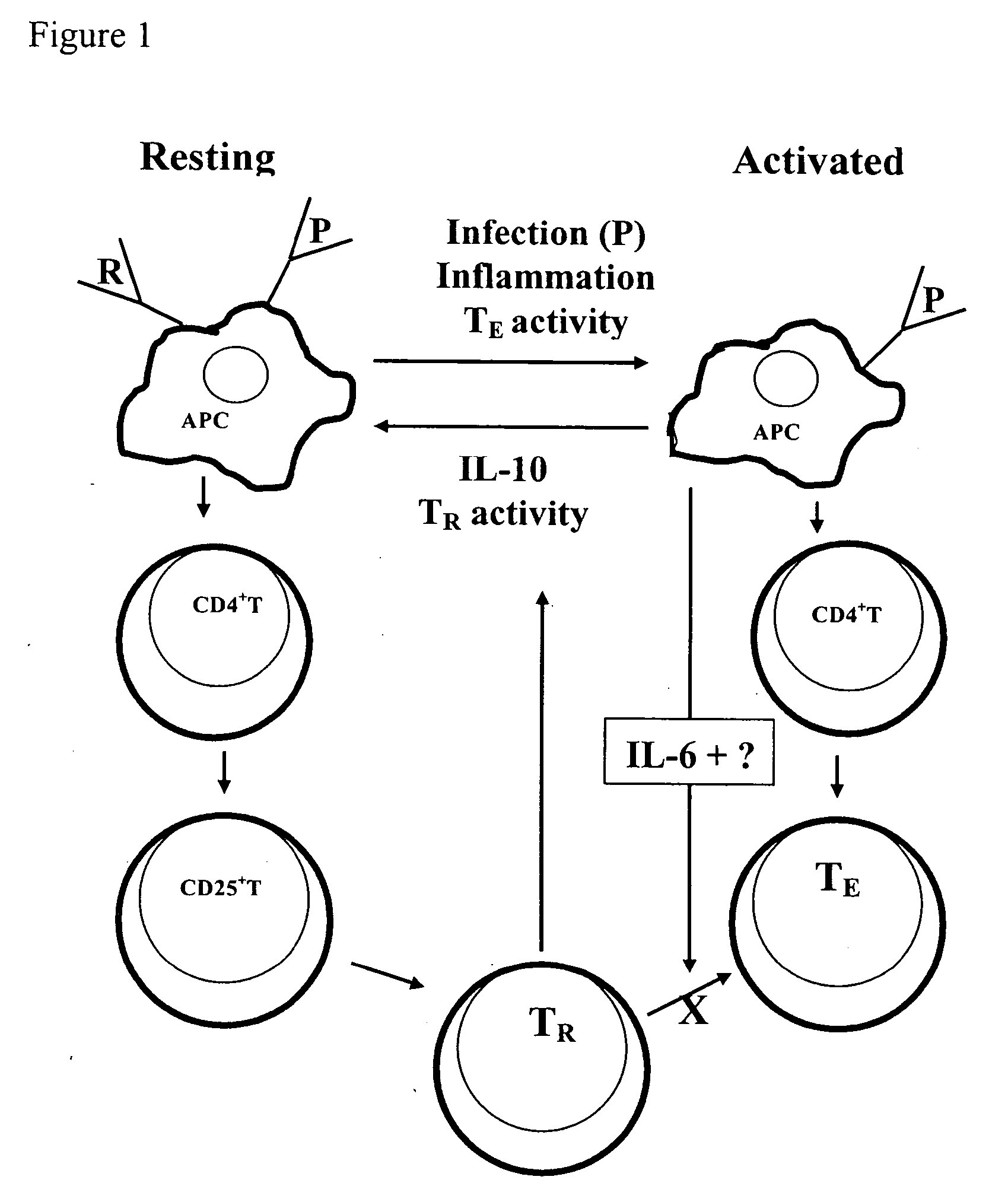Use of selected lactic acid bacteria for reducing infantile colic
a technology of lactic acid bacteria and infantile colic, which is applied in the direction of biocide, bacteria material medical ingredients, drug compositions, etc., can solve the problems of infantile colic controversy, infantile colic nature and causes remain poorly understood, and the trial of hypoallergenic milk in infantile colic is not supported by enough eviden
- Summary
- Abstract
- Description
- Claims
- Application Information
AI Technical Summary
Benefits of technology
Problems solved by technology
Method used
Image
Examples
example 1
[0052] Study of probiotic strains ability to promote IL-10 expression by monocyte-derived DC:
[0053] Immature DCs are generated from peripheral blood monocytes (Hilkens, C. M. U., P. Kalinski, M. de Boer, and Kapsenberg. 1997. Human dendritic cells require exogenous interleukin-12-inducing factors to direct the development of naive T-helper cells toward the Th1 phenotype. Blood 90:1920) cultured in IMDM (Life Technologies, Paisley, U.K.) containing 10% FCS HyClone, Logan, Utah), recombinant human (rh)GM-CSF (500 U / ml; Schering-Plough, Uden, The Netherlands), and rhIL-4 (250 U / ml; Pharma Biotechnologie Hannover, Hannover, Germany) (Kalinski, P., J. H. N. Schuitemaker, C. M. U. Hilkens, E. A. Wierenga, and M. L. Kapsenberg. 1999. Final maturation of dendritic cells is associated with impaired responsiveness to IFN-γ and to bacterial IL-12 inducers: decreased ability of mature dendritic cells to produce IL-12 during the interaction with Th cells. J. Immunol. 162:3231).
[0054] Strains t...
example 2
Selected Probiotic Strains Versus Simethicone in the Treatment of Infantile Colic
[0057] Breast-fed infants with a diagnosis of infantile colic are recruited in the Department of Pediatric and Adolescence Science (Drottning Silvias University Hospital, Göteborg). Patients aged 21-90 days, adequate for gestational age with a birth weight between 2500 and 4000 g, with colic symptoms satisfying the Wessel's criteria, and arisen almost 6±1 days before the enrollment, are considered for inclusion in the study (Wessel M A, Cobb J C, Jackson E B, Harris G S, Detwiler A C. Paroxismal fussing in infancy, sometimes called “colic”. Pediatrics 1954; 14: 421-35). All infants enrolled are exclusively breast-fed in order to reduce variability in the intestinal microflora due to variations in the diet, which may in turn have influenced the response to the probiotic. Infants are excluded if they had clinical evidence of chronic illness or gastrointestinal disorders or if they had received either an...
PUM
| Property | Measurement | Unit |
|---|---|---|
| Time | aaaaa | aaaaa |
| Time | aaaaa | aaaaa |
| Time | aaaaa | aaaaa |
Abstract
Description
Claims
Application Information
 Login to View More
Login to View More - R&D
- Intellectual Property
- Life Sciences
- Materials
- Tech Scout
- Unparalleled Data Quality
- Higher Quality Content
- 60% Fewer Hallucinations
Browse by: Latest US Patents, China's latest patents, Technical Efficacy Thesaurus, Application Domain, Technology Topic, Popular Technical Reports.
© 2025 PatSnap. All rights reserved.Legal|Privacy policy|Modern Slavery Act Transparency Statement|Sitemap|About US| Contact US: help@patsnap.com


